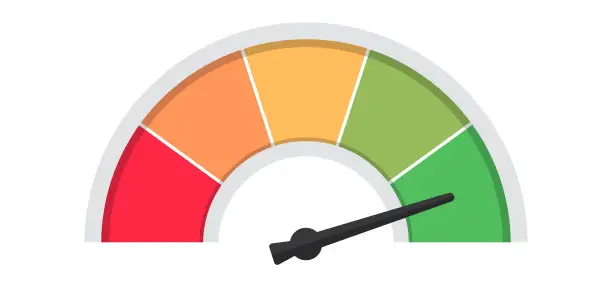Wasn’t it Warren Buffet who once said, “Someone’s sitting in the shade today because someone planted a tree a long time ago.”?
This is a mantra I like to live by when it comes to financial planning – you can never start too early if you aspire to live a comfortable life.
Like all things though, investing takes time and patience – it’s not an easy journey. However, there are certain tools and tips that I’ve found that can make this easier, which is what I’d like to share with you today.
If you’re looking to kickstart your financial planning journey, then read on!
1. Start with writing down a budget

The absolute first step you need to do before deciding where to put your money, is to know how much money you have to invest!
Creating a visual representation of my finances really helps me put it into perspective. Some of the best budget tracking tools I’ve tried in the past are:
- Mint: A handy little free-to-use app that aggregates all your bank accounts, credit cards, saving accounts, etc. into one place, and allows you to pay bills, receives notifications, views your credit score (without harming your credit!), and more.
- Wally: A simple, clean daily budgeting app with an extremely user-friendly interface that helps you input various expenses without needing to link your bank account to it.
- Pocketguard: Though this is a paid app, its easy interface and special features like cash flow visualization, extra security protection, and daily spending tracker make it a great option.
My only advice when it comes to using these apps is to make a habit of it – really make it a point to input every single dollar you spend and receive, so that you always have a snapshot view of your finances at hand.
2. Write Down Your Debts
However intimidating it may seem, it is always good to have a clearer picture of who you owe money to and when you need to pay them back.
Repaying your debt should be a top priority when it comes to financial planning – possibly even more so than saving. It’s simple math really, because most debt costs more than the best savings instruments can earn.
If you’re paying more interest than you’re earning, then you’re essentially losing money.
Make it a point to calculate how much you owe and create a fixed repayment schedule for clearing your debt.
This is not to say that saving should not be a priority for you. In fact, it is important to have emergency savings to fall back on in case any unexpected expenses crop up.
The best solution is to strike up a balance between saving and paying off your debt – here’s a neat video by WhiteBoard Finance that explains in better detail how you can approach this.
3. Be Frugal, Not Cheap

A favorite adage of anyone you ask for advice on how to improve your financial situation is to live below your means.
I prefer a somewhat different approach –focus on value rather than cost. Be frugal, not cheap.
Living frugally does not mean that you have to completely eliminate all unnecessary expenses – it just means spending your money more wisely.
For example – you might decide to purchase a used car to save money, but buying the cheapest, most busted jalopy in the shop means you’ll spend a fortune in repairs later on.
You might hesitate at the cost of spending those few extra bucks for an extended warranty, but you’ll thank your stars for spending that money when your television starts acting up.
You might cancel your cable to save on monthly expenditure, but you’re paying almost the same amount for faster internet for your Netflix bingeing.
So as you can see – list all the things you are spending on, and consider whether they are providing you with value.
There are definitely certain areas in which you can adjust your lifestyle to be more money-conscious, but this doesn’t mean you can’t enjoy living!
4. Know your Credit Score

The difference between having a good and bad credit score can mean paying thousands of dollars more for the same line of credit.
For example, a person with a high credit score who qualifies for a 25-year fixed-rate mortgage worth $200,000 at a 3.6% annual percentage rate (APR) would repay $1,012 per month.
Assuming a person with a low credit score could even qualify for the same mortgage, they could pay up to 5.3% on the loan, translating to a monthly payment of $1,204.
This adds up to an extra $192 per month or $57,600 over the lifetime of the mortgage – all because of a poor credit score!
While I prefer to set a limit on my credit card so I do not overspend, I understand that this can be difficult for some.
Other ways you can try to improve or maintain a good credit score is to set up automated bill payments for your regular expenses, limiting the number of new credit cards you open and keeping your credit balances as low as possible.
5. Create A Savings Plan

A savings plan is different from a budget.
Begin by setting yourself short term goals that are achievable – perhaps that holiday you’ve been dreaming of, an expensive piece of tech you want to splurge on, or an event you’d like to attend.
Start saving by putting away any extra cash you might have on hand towards this goal.
There are two approaches that I recommend here depending on your saving capacity.
The first, if you are comfortable saving a fixed amount routinely, is to simply set up automated transfers into an online savings account.
Popular online banks like Ally Bank, Radius Bank, etc. allow you to do this for free, and you earn interest on the amount that you save.
If you are new to the world of saving and find it hard to commit to a dedicated amount, consider using an app like Digit. Digit analyses your spending patterns and checks whether you can transfer a portion of your money into a deposit account.
While this money does not earn interest, it still helps you to start saving and build a habit of putting away extra cash.
6. Determine Your Risk Appetite

Assessing your risk appetite is a good step towards understanding your investment options. I have a moderate-high appetite for risk, so individual stocks make up around 40% of my portfolio.
However, as mentioned in the article on what types of stocks to invest in, you might think about investing in ETFs or Mutual Funds instead, especially if you want to spend less hands-on time with your investments.
Seeing where you stand on the risk scale can help you put together a portfolio that balances your priorities, since different financial instruments hold different levels of risk.
I like how SmartAboutMoney.org puts it all together in this nifty image of an “Investment Pyramid”.
The top of the pyramid shows investments that have a high level of returns, but also a correspondingly high amount of risk, whereas the foundation of the pyramid lies in less risky investments with a lower rate of return.
You can always go for a professional assessment of your risk appetite, but if you’d rather do this yourself, you might ask yourself questions such as:
- How much money would you be willing to lose?
- How often do you plan to track your investments?
- Would you rather earn a large sum of money but risk losing it, or earn a smaller, fixed sum guaranteed?
- In how many years will you begin to withdraw from your investments?
7. Avoid impulse purchases

At some point, we have all fallen prey to impulse purchases. Unfortunately, these tend to eat into your expenses, especially because they are unaccounted for, and before you know it, you can find yourself in a precarious financial position.
I like to live by the 30-day rule when it comes to buying new stuff. If I see something I like, I don’t buy it immediately; instead, I put it on a list and revisit that list at the end of the month.
If at the end of the month, I feel like I could still benefit from buying it, I go ahead. In most cases, however, my urge to buy has cooled off, and I save that money instead!
Of course, everyone likes to treat themselves once in a while.
Personally, I prefer to treat myself to an experience such as a holiday, event, or spa day, rather than material objects – I find them more special.
However, as long as you are able to curb your impulse purchases, they should not have too much of an impact on your overall budget.
8. Stay in the know

One of my finance professor’s favorite adaptations of a popular quote was “If you think investment education is expensive, try ignorance”.
The best tip I can give you for being more financially responsible is simply educating yourself.
There are a wealth of online resources which can be very helpful in understanding basic financial concepts, staying updated on the news, and giving you inspiration on how to invest.
You can gain a lot by just reading and learning.
The first step to learning any skill successfully is observing, so spend some time doing this and absorbing all you can before delving into financial planning.
In case reading is not your thing, here are some of my favorite video resources for learning the basics of personal finance: Khan Academy, Whiteboard Finance, Big Think.
Remember – the journey towards financial bliss begins with baby steps.
And it is important to also acknowledge that your goals will not always remain the same, which is why, it is important to take some time to review and re-evaluate them periodically so you can stay on track as your priorities change.
To recap my top tips for financial planning :
- Begin with a budget
- Visualize your debt
- Focus on value rather than cost
- Know your credit score
- Set up regular savings
- Determine your risk appetite
- Avoid impulse purchases
- Keep educating yourself
If you have any questions, let me know in the comments below!

